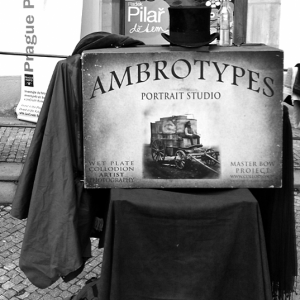The collodion technique is an early photographic process, said to have been invented, almost simultaneously, by Frederick Scott Archer and Gustave Le Gray in about 1851.
During the subsequent decades of its popularity, many photographers and experimenters refined or varied the process. By the end of the 1850s it had almost entirely replaced the first practical photographic process, the daguerreotype.
Wet plate collodion process required the photographic material to be coated, sensitized, exposed and developed within the span of about fifteen minutes, necessitating a portable darkroom for use in the field. This was a major disadvantage. The entire process, from coating to developing, had to be done before the plate dried. This gave the photographer no more than 10 minutes to complete everything. This made it inconvenient for field use, as it required a portable darkroom.
This is why we built the portable darkroom and use it in the field, in the same way as Roger Fenton, who was known as one of the first photographers to make pictures outside on location and not just in ateliers.
To see how we make ambrotypes, look into VIDEO section.

